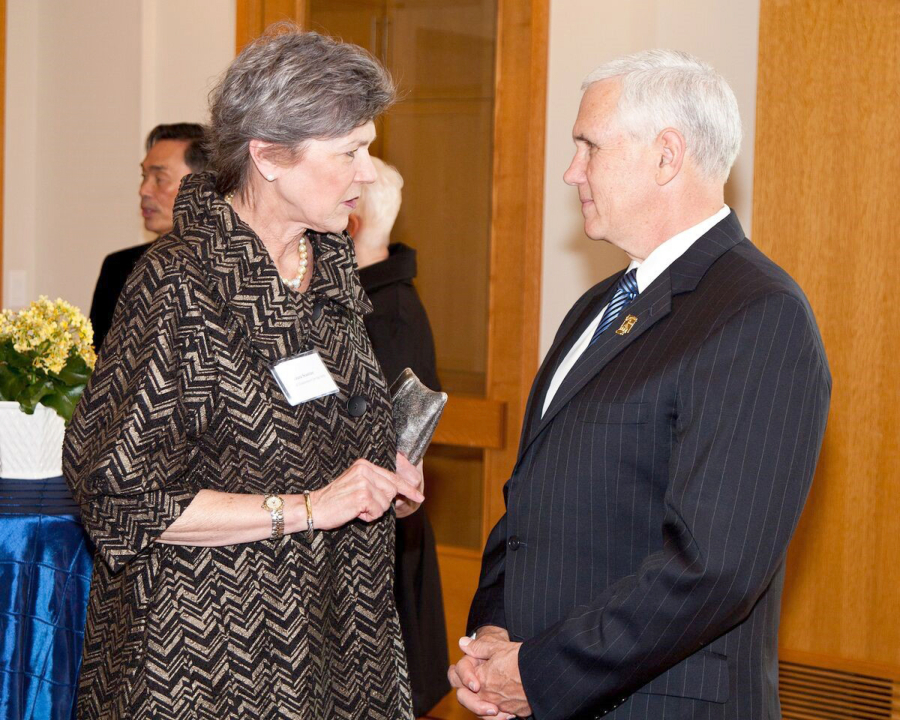The easiest thing is to expect the worst.
How could Donald Trump, snippy tweeter, reality TV huckster and the only human to give “Hamilton” a bad review — without seeing it, of course — be anything but bad for the arts?
The reality, though, is that the president-elect hasn’t said much on the subject, other than a few noncommittal responses to a Washington Post questionnaire in March.
“The unknown,” is how Anita Walker, the executive director of the Massachusetts Cultural Council, describes Trump. “He didn’t have any fully fleshed-out policy position on the arts. Neither of the candidates really spoke about them. So we actually have no idea where the incoming president is coming from.”
We do know there has been grumbling. Arts leaders on the coasts, where politics lean harder left, have not been shy. “Upset, bewildered, betrayed,” says James Cuno, president and chief executive of the J. Paul Getty Trust in Los Angeles, when asked to describe his response to Trump’s victory. Molly Smith, the artistic director of Arena Stage, compared Nov. 8 to these moments in history: The assassinations of Martin Luther King Jr. and President John F. Kennedy, 9/11 and the Newtown massacre.
But how will Trump change what her organization does? “I have no idea,” she concedes.
The key is not what Trump tweets. It will come when he makes decisions in wonkier areas, on tax codes and budget proposals, both key to how arts institutions and other nonprofit groups raise public and private money. Ticket sales generally only bring in a small portion of what museums, symphonies and theaters need to survive. They depend on donations and grants from public sources, including state arts councils and the National Endowment for the Arts.
And expect donors to be watching closely as Trump tries to make good on his campaign promise to cut taxes and alter the tax code. Like much in Trump’s camp, determining where campaign rhetoric meets policy has been a challenge.
“He has provided mixed messages,” says Sandra Swirski, a tax attorney who serves as executive director of the Alliance for Charitable Reform, a project of the Philanthropy Roundtable. “Early on, they thought it was important and were for the deduction. Later, they thought it could change or be capped. He’s been kind of all over the map.”
Swirski says she has advice for art museums or any cultural institutions. Call big donors and let them know that they should consider making gifts before the end of the year.
“We’re not sure what’s going to happen after that,” she said. “So give now, don’t wait.”
But arts leaders interviewed say they haven’t been making any special pleas. They say they’re operating just as they would have had Hillary Clinton won the election.
“Until we know what his plans are, it’s hard to react to them,” says Mark Volpe, managing director of the Boston Symphony Orchestra.
“No one should be being alarmist,” says Thomas Campbell, the director of the Metropolitan Museum of Art in New York. “We are fortunate to have benefited from generations of philanthropy, irrespective of the political hue of the administration.”
Philanthropist David Bohnett, whose donations have included more than $20 million to the Los Angeles Philharmonic, $10 million to the Los Angeles County Museum of Art, and $5 million to the Kennedy Center, says both candidates frustrated him during the campaign.
He supported Clinton, but she didn’t say much about the arts. He admits he is anxious about Trump’s talk of limiting charitable giving.
“Anything that reduces the amount of private sector philanthropy is a big concern because it’s not being made up by the public sector,” says Bohnett.
Then there is the National Endowment for the Arts. Trump dodged the question in the Post questionnaire and, a week before the Nov. 8 election, the nonprofit advocacy group Americans for the Arts offered a candidate scorecard that showed just how little the Republican nominee had shared about his positions. House Speaker Paul D. Ryan, R-Wis., has proposed in the past cutting funding for the NEA and other agencies.
But Sarah Bainter Cunningham, a former NEA staffer who is the executive director of research for the School of the Arts at Virginia Commonwealth University Funding for the NEA, notes that past Republican administrations have supported the NEA, peaking under George H.W. Bush’s administration even as the culture wars remained heated.
Arts leaders, she adds, are particularly resilient.
“If any community is good about dealing with challenges relative to economics or even articulating a clear voice amidst perhaps some sense of lack of clarity, the arts community is,” she said.
Not everyone is sharing their political opinions right now. There is clearly a reluctance among some arts leaders to question Trump. He’s proved to be thin-skinned when criticized, as evidenced by his flurry of complaints over “Saturday Night Live’s” portrayal of him and last week’s incident at “Hamilton.”
An NEA spokesman said nobody from the agency would be available to comment on Trump. Smithsonian Secretary David J. Skorton, in an interview, stressed that the institution is nonpartisan. In addition, as vice president, Pence will sit on the Smithsonian’s board of regents.
“I have no reason to think this is going to be any different than any other administration,” said Skorton. “In general, Congress has been very generous with the Smithsonian. I would assume and hope that will continue to be the case.”



